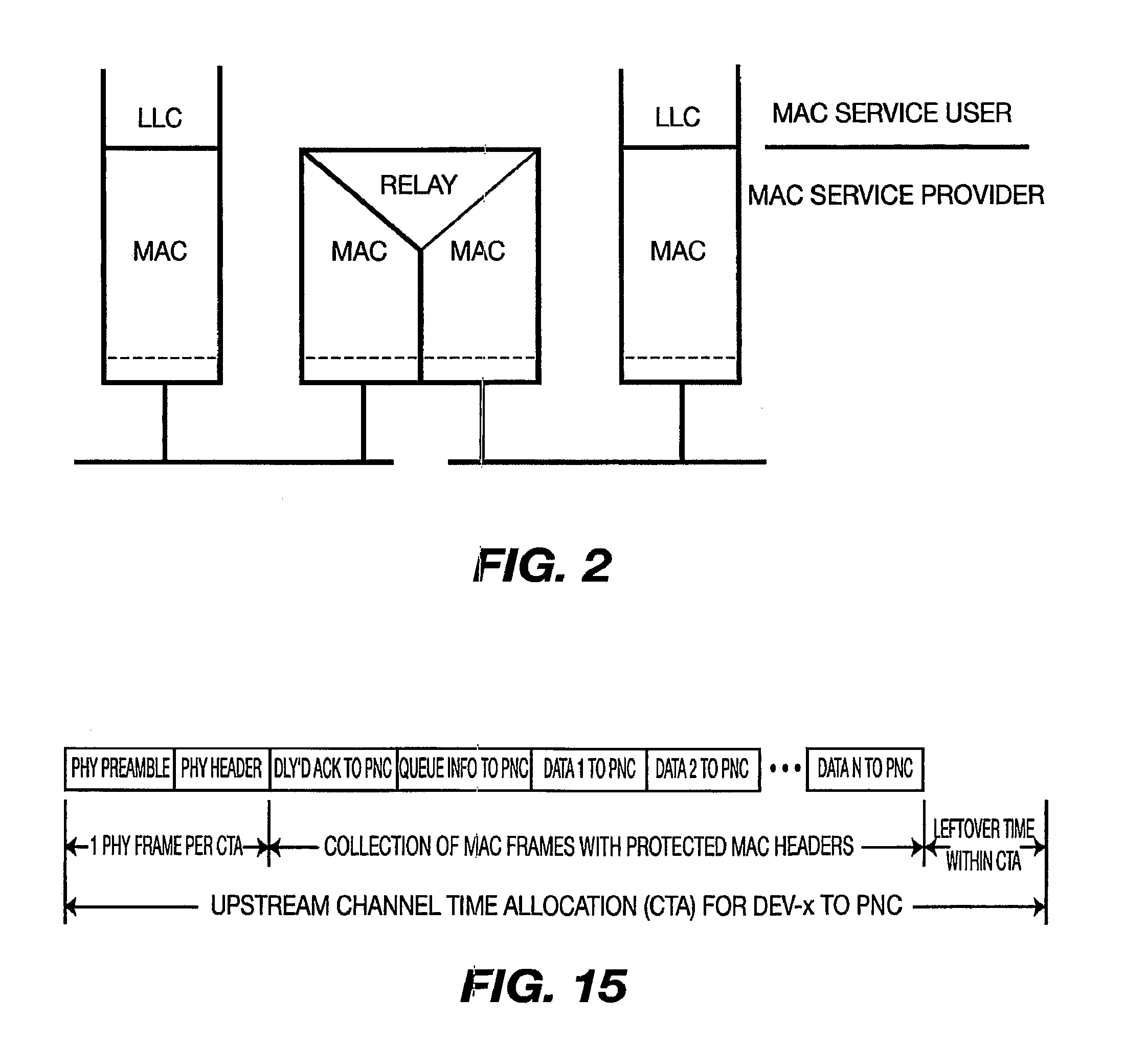Media access control protocol data unit aggregation in a time division multiple access media access control layer
a media access control and protocol data unit technology, applied in the field of compressed multimedia/video distribution, can solve the problems of inability to know all of the ip traffic characteristics a-priori, inherently inefficient mac layer type, and no quality of service (qos) guarantee, etc., to improve the efficiency of the mac and therefore throughput, reduce overhead, and improve the effect of efficiency
- Summary
- Abstract
- Description
- Claims
- Application Information
AI Technical Summary
Benefits of technology
Problems solved by technology
Method used
Image
Examples
Embodiment Construction
[0033]The present invention starts with an IEEE 802.15.3b MAC, which supports TDMA services (beacon at beginning of the superframe with transmission time allocations within the superframe). IEEE 802.15.3b supports PHY PDU (PPDU) aggregation by transmitting PHY packets within a CTA using a minimum IFS (MIFS). This IFS can be used when packets from one device are sent consecutively (as with the present invention). However, the MIFS and the PHY preamble and header associated with each PPDU add overhead with no added value except to minimize clock drift at the PHY layer. The present invention makes use of all available time in a CTA by reducing the amount of PHY overhead.
[0034]The present invention concerns the MAC and bridging layers of a wireless video service distribution system, which distributes compressed video from a master STB to remote STBs. The system makes partial use of an IEEE 802.15.3b TDMA MAC and therefore uses some of the terminology from that standard. An exemplary sys...
PUM
 Login to View More
Login to View More Abstract
Description
Claims
Application Information
 Login to View More
Login to View More - R&D
- Intellectual Property
- Life Sciences
- Materials
- Tech Scout
- Unparalleled Data Quality
- Higher Quality Content
- 60% Fewer Hallucinations
Browse by: Latest US Patents, China's latest patents, Technical Efficacy Thesaurus, Application Domain, Technology Topic, Popular Technical Reports.
© 2025 PatSnap. All rights reserved.Legal|Privacy policy|Modern Slavery Act Transparency Statement|Sitemap|About US| Contact US: help@patsnap.com



